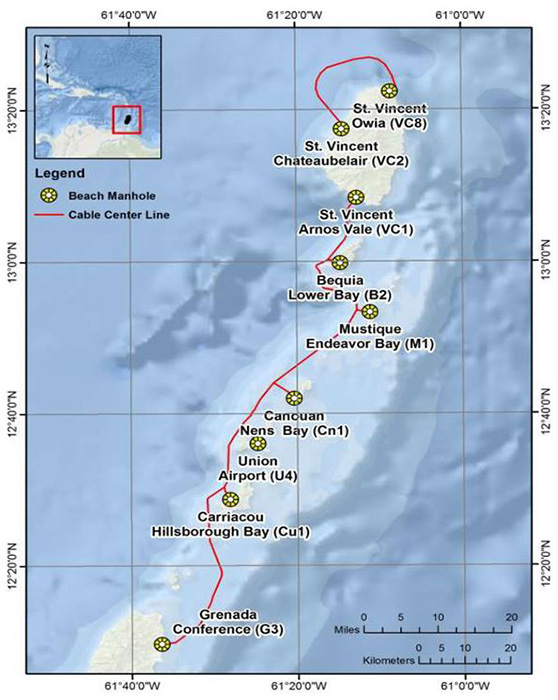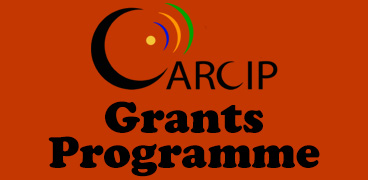The Government of St.Vincent and the Grenadines on behalf of the World Bank, Digicel OECS LTD and Digicel St.Vincent, its partners in the CARCIP Public Private Partnership agreement, announces that as part of its work programme for the development of an undersea cable, a draft Environmental and Social Impact Assessment (ESIA) document has been produced and published by Digicel on behalf of the partners.
The document examines the potential environmental and social impacts of the proposed Project activities, and describes the recommended mitigation measures.
Below you can find an executive summary of the ESIA. Additionally, the full document can be downloaded by clicking on the following link:
https://www.dropbox.com/s/rfhydwznohtieoe/20181211%20CARCIP%20ESIA%20R6%20PH%20Clear.docx?dl=0
The Government of St.Vincent and the Grenadines invites members of the public to submit written comments on the document. The comments can be addressed to CARCIP (ESIA Comments), Director of Economic Planning, Economic Planning and Sustainable Development Division, Ministry of Finance, Economic Planning, Sustainable Development and Information Technology, First Floor, Administrative Centre, Bay Street, Kingstown, Saint Vincent and the Grenadines. Tel: 784-457-1746. E-mail: This email address is being protected from spambots. You need JavaScript enabled to view it., This email address is being protected from spambots. You need JavaScript enabled to view it. and must be submitted within 14 days from the date of publication of this notice. Comments can also be submitted via email to This email address is being protected from spambots. You need JavaScript enabled to view it./This email address is being protected from spambots. You need JavaScript enabled to view it. or via telephone (784) 457-1746.
The full report is also available in hard copy for inspection during working hours at:
Economic Planning and Sustainable Development Division,
Ministry of Finance, Economic Planning, Sustainable Development and Information Technology,
First Floor, Administrative Centre, Bay Street,
Kingstown, Saint Vincent and the Grenadines
Executive Summary of Draft ESIA
Digicel Group proposes to install and operate a modern subsea telecommunications cable between St. Vincent and Grenada islands with cable landings on the intervening islands of Bequia, Mustique, Canouan, Union Island and Carriacou. An additional subsea cable link will be installed between Chateaubelair and Owia on St. Vincent.
This project has been procured by CARCIP under the CARCIP Invitation for Bids (IFB) of May 26, 2016, Lot 3, ID: SVG-CARCIP-G-ICB-2 (CARCIP 2016). According to the IFB, the installation and operation of the undersea cable system with landing stations comprises Lot 3, “Undersea Cable System.” The scope of Lot 3 is: “Undersea Cable System connecting St. Vincent and Grenada islands with Bequia, Mustique, Canouan and Union Island (possessions of St. Vincent and The Grenadines [VC]) and Carriacou (possession of Grenada [GD]).” The IFB further indicates that the governments of VC and GD will provide “potential Crown Lands for cable landing stations.” (CARCIP 2016)

The purpose of this project is to install fiber optic subsea cable and supporting beach connections from shore to shore for the listed islands. The project is needed because of a lack of modern Information and Communications Technologies (ICT) connections between the various islands in VC and GD. The primary result of this project will be to support the complete CARCIP vision of modernizing internet connections and service for government, schools and the public.
The basic infrastructural components of this project include approximately 139.8 mi. (225 km) of fiber optic cable, laid on the sea floor. A main trunk cable is proposed to run between St. Vincent and Grenada with branching cable segments at intervals to serve individual islands. In deep water, single armor (SA) cable is typically used. Near shore, both SA cable and double armor (DA) cable are used. An underground beach manhole (BMH) landing facility will be installed at each landing site location to anchor the subsea cable and house connections to cabling ashore which in turn connect to a Cable Landing Station (CLS).
The conduct of this project will be in compliance with the various laws and regulations duly established by the host nations, VC and GD. Ministerial staff of the two countries have been collaboratively engaged in planning for the project, siting beach cable landing sites and considering protected natural and social resources.
Landing sites were selected from several alternatives at each connecting island. Some proposed landing sites were avoided because of environmental protection standards. The preferred landing sites are all feasible from a construction standpoint, access from inland to the site is available, the sites are typically not used by the public or commerce.
Analysis of the proposed actions against the backdrop of existing conditions along the cable route and at each landing site show the impacts from the project are expected to be generally positive by improving existing ICT infrastructure and subsequent opportunities.
During the construction phase of the project some minor and short-lived adverse impacts will occur. These include excavation for and construction of the beach manhole structures, cable laying and cable landing installation. Construction at each landing site will take approximately one week and the entire cable laying activities will be conducted over a period of about one months.
Articulated pipe weighted armor will keep the cable in place and prevent scouring of the sea floor in nearshore areas. Beach construction sites will be returned to pre-construction conditions with the exception of visible manhole covers and an occasional conduit/cable on the sea bottom in intertidal areas. Finally, notification of impending construction will be provided locally and appropriate notices will be posted.
Social surveys and site visit observations indicate that social impacts are positive with some minor negative aspects. In addition, stakeholder and public consultations will be held to ensure that the public is aware of all positive and potentially concerning effects of the project. Installation of the cable will be positive for government, education, commerce and the public internet connections. On the other hand, installation of beach landings will temporarily exclude some activities such as fishing and small vessel navigation for the short duration of construction. Afterwards, installed components are inconspicuous, only to be seen by the occasional fisherman or beach pedestrian. The presence of the cable will have negligible effect on fisheries.
This Environmental and Social Impact Assessment (ESIA) contains an Environmental and Social Management Plan (ESMP) setting structure to accomplish the project and structure to address comments and concerns from the public and government.


